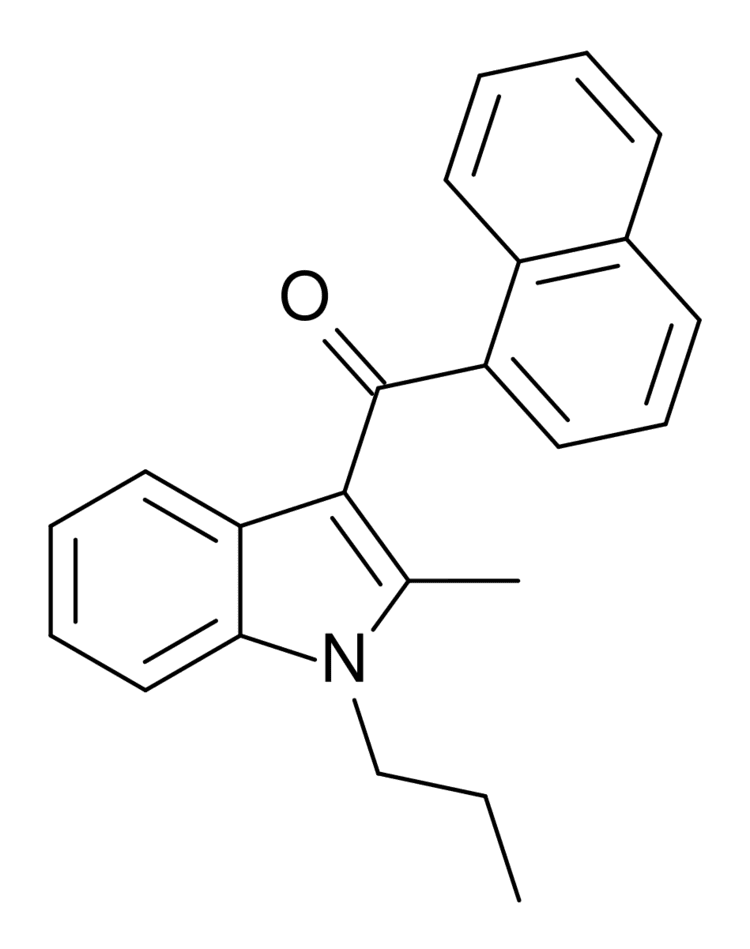CAS Number 155471-08-2 IUPHAR/BPS 5558 ECHA InfoCard 100.161.912 | PubChem CID 4273754 ChemSpider 3480676 Molar mass 327.43 g/mol | |
 | ||
Legal status CA: Schedule IIDE: Anlage II (Prohibited) | ||
JWH-015 is a chemical from the naphthoylindole family that acts as a subtype-selective cannabinoid agonist. Its affinity for CB2 receptors is 13.8 nM, while its affinity for CB1 is 383 nM, meaning that it binds almost 28x more strongly to CB2 than CB1 However it still displays some CB1 activity, and in some model systems can be very potent and efficacious at activating CB1 receptors, and therefore it is not as selective as newer drugs such as JWH-133. It has been shown to possess immunomodulatory effects, and CB2 agonists may be useful in the treatment of pain and inflammation. It was discovered and named after Dr. John W. Huffman.
Contents
Metabolism
JWH-015 has been shown in vitro to be metabolised primarily by hydroxylation and N-dealkylation, and also by epoxidation of the naphthalene ring, similar to the metabolic pathways seen for other aminoalkylindole cannabinoids such as WIN 55,212-2. Epoxidation of polycyclic aromatic hydrocarbons (see for example benzo(a)pyrene toxicity) can produce carcinogenic metabolites, although there is no evidence to show that JWH-015 or other aminoalkylindole cannabinoids are actually carcinogenic in vivo. A study published in the British Journal of Cancer shows that JWH-015 may signal certain cancers to shrink through a process called apoptosis.
Legal Status
As of October 2015 JWH-015 is a controlled substance in China.
